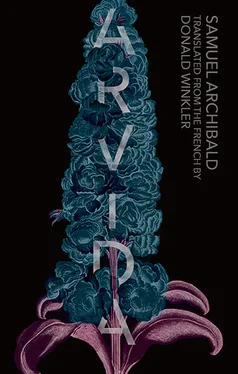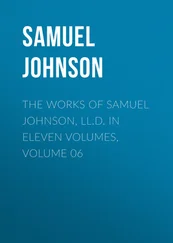It was time now to make her way north.
The Centre of Leisure and Forgetfulness
ARVIDA II
My grandmother, mother of my father, often said:
“There are no thieves in Arvida.”
The Americans built the town beside the aluminum smelter in a hundred and thirty-five days. There’d been nothing around for 200 million years, then there was the Alcan smelter, and a hundred and thirty-five days later, a town. The spiteful claimed that only after the 1941 strike did the Americans decide to no longer treat the workers like cattle, but my father and others said that was a lie.
Look at the evidence.
The Americans allowed the four parishes to be built around enormous churches, and contented themselves with two chapels, one Evangelical and the other Anglican, two little chapels in red brick, one beside the other, in front of the Notre-Dame-du-Sourire school, and beside Riverside School on Boulevard des Saguenéens. The sinuous and labyrinthine designs of the town’s streets, the proximity of the bosses’ houses to those of the foremen and workers, the big parks at each corner, and the flanking of the houses of worship by two schools and a skating rink, everything in Arvida attested to the fact that this model town was the little utopia of a billionaire philanthropist, built from scratch right in the middle of nowhere. The plan was laid out in full knowledge that the sons of the bosses would be playing hockey and baseball with the offspring of the others, that the daughters of the one would be doing their homework alongside those of the others, and that all of them, boys and girls, would perhaps one day be sleeping in the same bed.1
That’s how the town was seen in my family, and even today it’s hard to budge my father. In 2004 there was a television report to mark some anniversary or other, and it was suggested that the original parish of Sainte-Thérèse be declared a UNESCO heritage site. There was old Madame Tretiak, wife of a worker, who claimed that in the little house where she lived with her husband and eight children, the Alcan builders had skimped on the insulation. She said that in the depths of winter the walls were covered in a thick layer of ice. When one of my visiting friends repeated the story, my father dismissed his argument with the back of his hand.
“The walls of the house froze because it was the good woman Tretiak who was skimping on the heating. I’ll bet you a twenty that she herself ripped the insulation out of the walls to add it to the lining in her coats. She was tight with everything, Madame Tretiak. Her husband drank almost all his pay plus half that of his teetotalling brother. He left her two bucks a week for the laundry, the groceries, and the bills, and she still put something aside for a rainy day.”
It was Arthur Vining Davis’s dream, and he christened it with an acronym drawn from the first two letters of his own three names. Andrew Mellon, the richest man in the world, financed the construction. There were men who designed it and others who built it, and the employees of Alcoa and Alcan have lived there ever since.
From time to time there is talk of its possible consecration as a UNESCO heritage site. I think that began even as it was being built, and it’s become a running gag between my father and me. Whenever we pass an Arvidian house to which the years have not been kind, a duplex whose owners have painted their halves in different colours, or a lawn indifferently tended, one of us says:
“Now that one, it’d be best not to show it to the guys from UNESCO.”
It all started up again in 2010. In an interview, the municipal counsellor Carl Dufour declared:
“Without Arvida, the Germans might have won the war.”
A grotesque claim with one merit: that of being the most outrageous exaggeration in the history of a town that had all the same witnessed the birth of my father. It’s true that almost all the aluminum that went into the fuselage of allied planes was produced at the Vaudreuil factory. The installations were protected during most of the war by anti-aircraft batteries that formed strange totems on the grass around the buildings. Of course, Arvida was not Pearl Harbor, nor London, nor even Dresden. The Japanese and the Germans had plenty to keep them busy on the Russian steppes or in the great Pacific powder keg without coming over to disturb the uneasy calm of the population of Arvida.2
I understand, of course, what Councillor Dufour was trying to say, but it seems to me that in wanting to revive the town’s obscure historical importance, he seriously misrepresented its nature.
Arvida has never been a town at the crux of history, but rather a place resolutely outside it. There were no thieves in Arvida, at least not many, but there were, drawn by the wealth to be found there or sought out by its laboratories, Americans, Englishmen, and people from the four corners of the earth.
From Russia came the Marinoffs, one of whose daughters, Sonia, is my godmother.
From Italy came the machinist Dan Belladonne, Brian Santoni of the employment office, the restaurant owner Amato Verdone, and old man Zampieri, who laid down marble and terrazzo, and who was the grandfather of the Bourque brothers.
From Poland came Matt Barkovitz, the mechanic Joe Pollock, and my grandparents’ neighbour, Mister Belinak.
From Holland had come the chemist Neil Van Dalen.
From Greece came Gus Tectonidis, and the friend of the family Vic Kostopoulos.
From Japan came Frank Watanabe, the engineer. It appears he was not alone: a photo from between the wars shows the former factory pay office, a shed that looked like a train station out of an old Western, with in front of it, swaying in the breeze and suspended from two chains, a sign with the words PAY OFFICE written in French, English, and in Japanese characters.
From Catalonia came Jordi Bonet, just long enough to create a large mural on the front of the city hall.
From the pasturelands of Ireland and the heaths of Scotland came, try to sort them out: the other Archibald family, the Burrows, Terry Loucks, Neil Balcon, Reidy Smith of the Arvida orchestra, the Duffys, the O’Dorthys and the Fountains, Teddy Hallahan, Stephen Lee (Peter Lee’s father), the expert carpenter Médéric McLaughlin, father of Popeye McLaughlin and fourteen other children who looked as alike as two drops of water.
I’ve forgotten some, obviously. All these people had come to Arvida, drawn to a Nordic version of El Dorado, an American Dream that had veered some thousands of kilometres off course. They’d often come to forget things, and never, never ever, to remember anything. Certainly not a war.
Another paternal story of larceny illustrates this principle in catastrophic fashion. My grandfather, a foreman in the painting workshop, was responsible for purchases, and sometimes received a visit from Mister Addams, who dealt in products to be used in industrial renovation. Mister Addams was a tall, strapping Welshman, blond and blue-eyed, good looking but with equine teeth. He’d arrive with an armful of alcohol, cheap gin especially, and ate with the family and the Polish neighbour Mister Belinak, who always found a way to get himself invited.
After dinner the children were sent right to bed and my grandmother was thanked for her help, free, for once, to relax in the basement in front of the television set. My grandfather, Mister Addams, and Mister Belinak talked together late into the night, until their stock of hard liquor was totally depleted. For my father, still very young, those evenings were shrouded in a certain mystery. It never entered his mind that they were hidden from his eyes only to spare him the shocking spectacle of seeing his father drunk.
Georges-Émile Archibald didn’t drink, except for a porter thick as molasses at Saturday breakfast to go with his eggs and mustard, and, in hiding, in the garage. In the unbridled imagination of my father, these meetings assumed the proportion of Yalta conferences in miniature. The men were clearly making important decisions, either in sharing out the free world or for the better good of those living on Rues Moisan, Castner, and Foucault.
Читать дальше












